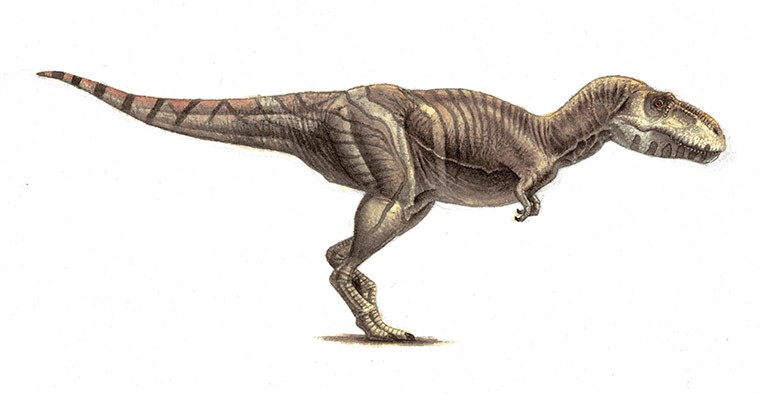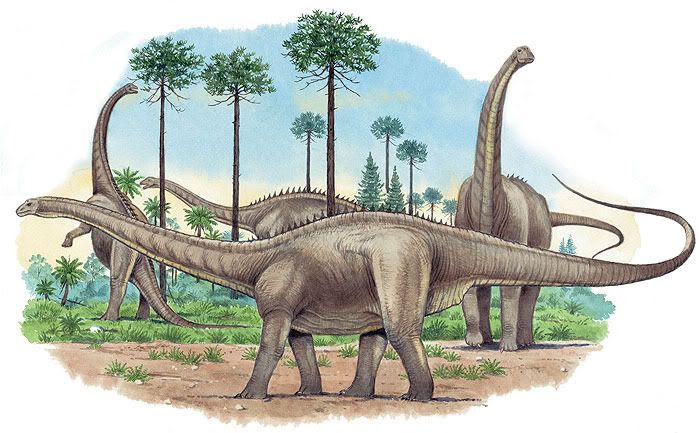Post by dinosauria101 on Mar 20, 2019 15:59:46 GMT 5
Paraceratherium bugtiense
Paraceratherium, also commonly known as Indricotherium or Baluchitherium, is an extinct genus of gigantic hornless rhinoceros-like mammals of the family Hyracodontidae, endemic to Eurasia and Asia during the Eocene to Oligocene 37.2—23.030 Mya, existing for approximately 14.17 million years. It was first discovered in the Baluchistan province of Pakistan, hence the name, by Sir Clive Forster Cooper. Paraceratherium is the largest land mammal known, larger than the largest species of mammoths (Mammuthus sungari, which may have approached it in size and weight). It is also known as the "giraffe rhinoceros". Adult Paraceratherium are estimated to have been 4.2 metres (14 ft) tall at the shoulder, 6.3 metres (21 ft) in length from nose to rump, a raised head height of about 5 metres (16 ft), and a skull length of 1.5 metres (4.9 ft). Weight estimates vary greatly, but most realistic and reliable weight estimates are about 11 tons. This puts it in the weight range of some sauropod dinosaurs. It was a herbivore that stripped leaves from trees with its down-pointing, tusk-like upper teeth that occluded forward-pointing lower teeth. It had a long, low, hornless skull and vaulted frontal and nasal bones. Its front teeth were reduced to a single pair of incisors in either jaw, but they were conical and so large that they looked like small tusks. The upper incisors pointed straight downwards, while the lower ones jutted outwards. The upper lip was evidently extremely mobile. The neck was very long, the trunk robust, and the limbs long and thick, column-like.

Tarbosaurus bataar
Tarbosaurus belongs in the subfamily Tyrannosaurinae within the family Tyrannosauridae, along with the earlier Daspletosaurus, the more recent Tyrannosaurus and possibly Alioramus. Animals in this subfamily are more closely related to Tyrannosaurus than to Albertosaurus and are known for their robust build with proportionally larger skulls and longer femurs than in the other subfamily, the Albertosaurinae. Although many specimens of this genus have been found, little definite data was confirmed on the dinosaur as of 1986, though it was presumed to share many characteristics with other tyrannosaurids. The close similarities have prompted some scientists to suggest a possible link between the North American and Eurasian continents at that time, perhaps in the form of a land bridge.As with most dinosaurs, Tarbosaurus size estimates have varied through recent years. It could have been 10 to 12 meters long, with a weight of 5 - 7 tons.

Credit to Wikipedia
Paraceratherium, also commonly known as Indricotherium or Baluchitherium, is an extinct genus of gigantic hornless rhinoceros-like mammals of the family Hyracodontidae, endemic to Eurasia and Asia during the Eocene to Oligocene 37.2—23.030 Mya, existing for approximately 14.17 million years. It was first discovered in the Baluchistan province of Pakistan, hence the name, by Sir Clive Forster Cooper. Paraceratherium is the largest land mammal known, larger than the largest species of mammoths (Mammuthus sungari, which may have approached it in size and weight). It is also known as the "giraffe rhinoceros". Adult Paraceratherium are estimated to have been 4.2 metres (14 ft) tall at the shoulder, 6.3 metres (21 ft) in length from nose to rump, a raised head height of about 5 metres (16 ft), and a skull length of 1.5 metres (4.9 ft). Weight estimates vary greatly, but most realistic and reliable weight estimates are about 11 tons. This puts it in the weight range of some sauropod dinosaurs. It was a herbivore that stripped leaves from trees with its down-pointing, tusk-like upper teeth that occluded forward-pointing lower teeth. It had a long, low, hornless skull and vaulted frontal and nasal bones. Its front teeth were reduced to a single pair of incisors in either jaw, but they were conical and so large that they looked like small tusks. The upper incisors pointed straight downwards, while the lower ones jutted outwards. The upper lip was evidently extremely mobile. The neck was very long, the trunk robust, and the limbs long and thick, column-like.

Tarbosaurus bataar
Tarbosaurus belongs in the subfamily Tyrannosaurinae within the family Tyrannosauridae, along with the earlier Daspletosaurus, the more recent Tyrannosaurus and possibly Alioramus. Animals in this subfamily are more closely related to Tyrannosaurus than to Albertosaurus and are known for their robust build with proportionally larger skulls and longer femurs than in the other subfamily, the Albertosaurinae. Although many specimens of this genus have been found, little definite data was confirmed on the dinosaur as of 1986, though it was presumed to share many characteristics with other tyrannosaurids. The close similarities have prompted some scientists to suggest a possible link between the North American and Eurasian continents at that time, perhaps in the form of a land bridge.As with most dinosaurs, Tarbosaurus size estimates have varied through recent years. It could have been 10 to 12 meters long, with a weight of 5 - 7 tons.

Credit to Wikipedia





